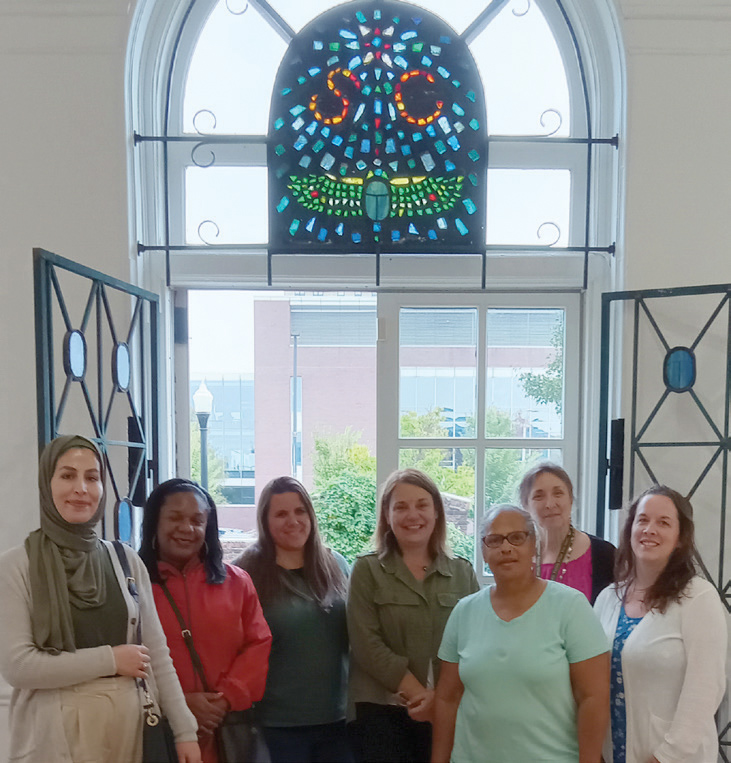How the Scarab joined the Club

According to Google Maps, only 12 minutes of walking separate our department from an institution that is a testimony to humanity’s extraordinary fondness for beetles over thousands of years.
Founded in 1907, the institution itself, the Scarab Club of Detroit, has reached a notable age. In our new initiative to connect the Department of Biological Sciences with the legacy city, the department staff paid a visit kindly hosted by Kathryn Dimond, the Scarab Club’s current director of business, on Oct. 7 of this year to learn, among other things, how the institution came to be named after scarab beetles.
The field trip revealed a story of cultural takeover. Originally called the Hopkin Club after founding member and well-known painter Robert Hopkin, the three-story landmark brickstone building on 217 Farnsworth Street has served as a home for artists and art enthusiasts since 1907. In 1913, then president James Swan and collector of carved Egyptian scarabs decided to align the Hopkin Club with the country’s Orientalism fever and renamed the institution about an ancient Egyptian symbol of the eternal cycle of life, death and rebirth: the scarab beetle.
To the cool-headed taxonomists of our department, this is partly a story of plain statistical odds. With over 350,000 documented and 7,000,000 estimated species, beetles represent with distinction the largest order-level group of all animals. From this perspective, every second building on planet Earth should be named after a beetle. Scarabs, however, are not just any kind of beetle. Besides being generally large and colorful, the representatives of this 35,000 species large family are famous for recycling dung into food provisions for their larval offspring. These intriguing traits must have been noted by patient observers of the natural world in ancient Egypt who recognized the metaphorical connection to the cycle of life, death and rebirth in the sense of ecological turnover.
To be more precise, Egyptians saw a similarity between scarab beetles’ behavior and the sun’s daily progression from east to west. Scarab beetles were therefore associated with Khepri, the god of the sun and resurrection. Earliest jewelry and seals featuring the coleopteran date back over 4,000 years.
Closer to home again, it is astounding how this legacy of ancient Egypt finds itself close to the largest Middle Eastern community in the United States today, which is amply reflected in the 20% of students of Middle Eastern/North African in our classrooms. These are just some of the many very special reasons why the Scarab Club was the most obvious first choice to build an alliance with the Department of Biological Sciences to explore how biology explains art and how art invites us to understand biology.
Stay tuned or, even better, come by both places to find out more. We’re close neighbors!